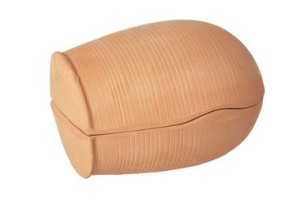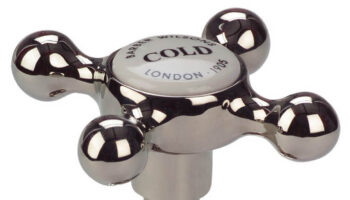They can be found in kitchens up and down the land. Most of them are probably lying forgotten at the back of a hardly opened cupboard. A few are proudly out on the work top – filled with paper clips and rubber bands and that bit of blue tak that you thought might come in useful one day.
Rarely, it seems is the chicken brick used for its original purpose.
But hold on. Habitat, which discontinued the chicken brick in 2008 has apparently realised its mistake and reintroduced it “due to popular demand”. Colin Rose, who runs Weston Mill Pottery with his father John (www.wmpot.co.uk ), says it’s his most popular product after the wine rack. So clearly some people somewhere are using theirs.
“I have never ever met anyone who has anything bad to say about a chicken brick once they have used one,” says Colin. “They probably had their hey day in the 70s and we supplied them to Habitat until the early 90s when demand seemed to wane but they’re back now and we sell loads of them.”
The origin of the actual chicken brick is unclear although terracotta pots have been used for cooking since before Roman times.
It was introduced to the UK in 1964 by Sir Terence Conran, who was also responsible for the duvet (see Design Classic #5), the wok and the paper lantern, as he searched the world for products for his trendy new store on the Kings Road. It was immediately popular as a wedding gift.
So just what is so great about this pot then? Well for the health fanatics among you, the first point is that you don’t need to add any fat to the bird. A chicken brick acts like a mini oven and will steam cook the food in its own moisture. The terracotta stores then distributes the heat without causing the fat to burn, while the dry walls mean that the meat browns as it would in a normal oven.
Rose says: “We advise that you soak the brick first but it doesn’t really matter if you don’t. You do need to put it into a cold oven though so the cooking time is longer than in the traditional way.
“The meat is just so succulent and moist and the skin will be crispy. The other good point is that if you are late, you can just leave it in the oven and it won’t dry out. It’s very forgiving like that.”
As the brick ages it will absorb the flavours and turn darker in colour, which is totally normal. But for the same reason you should never wash it in detergent and don’t use it for fish or curries.
So go on, fetch it out of the cupboard, find a new home for the paper clips – let’s face it you’re not using the juicer – and try the brick for your chick.
First published in The Independent






